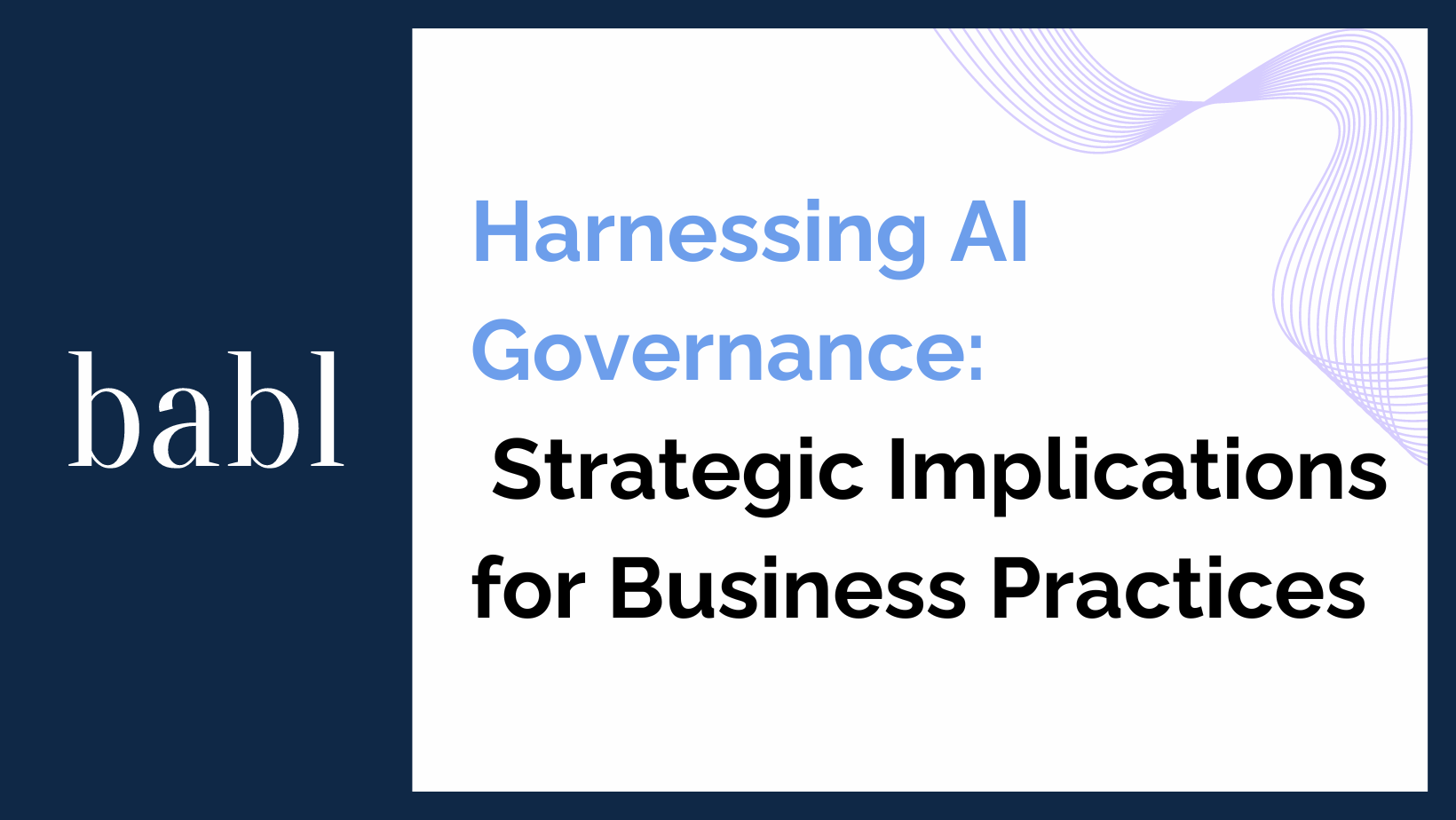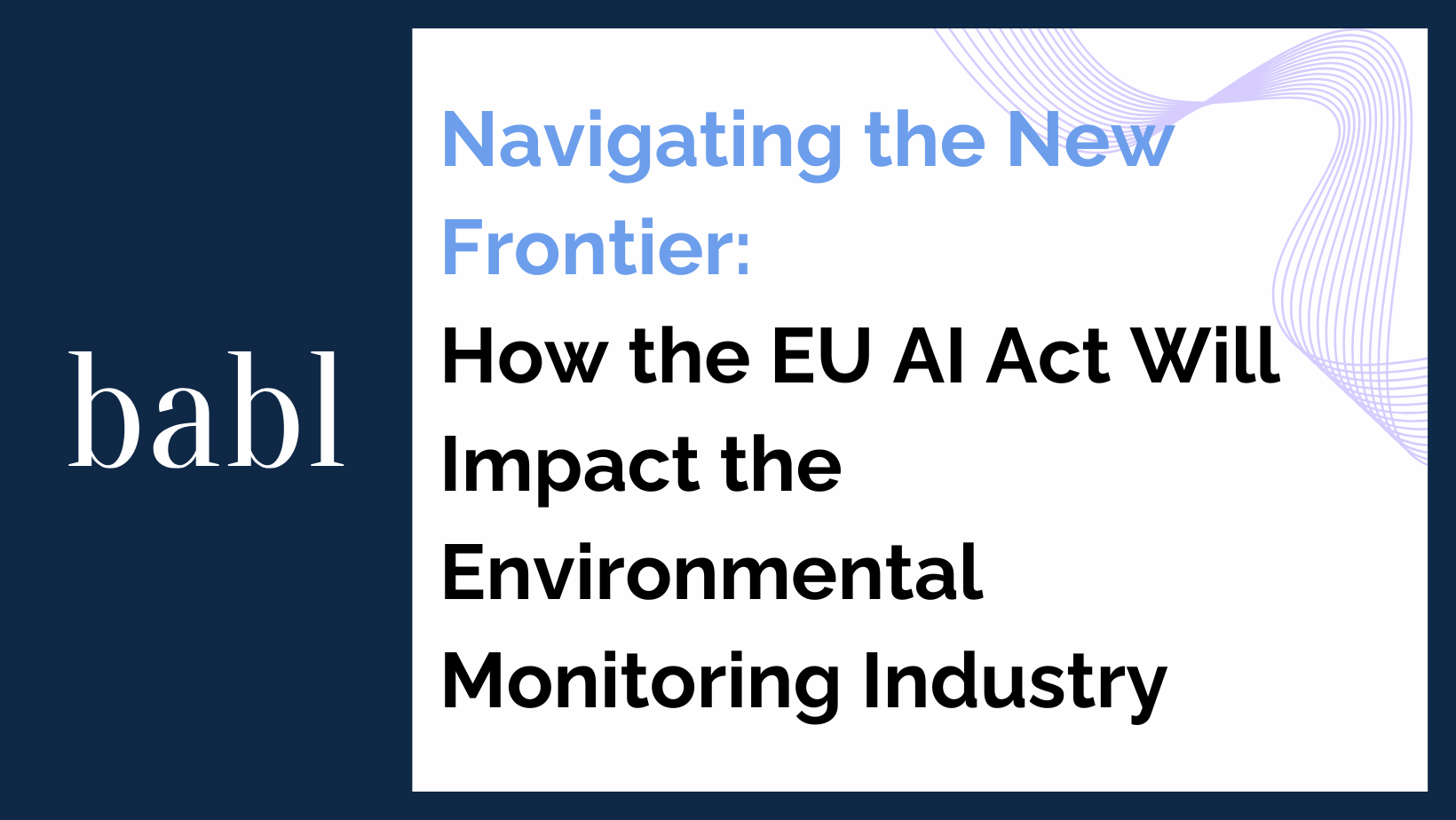Harnessing AI Governance: Strategic Implications for Business Practices
In an era where artificial intelligence (AI) is reshaping business landscapes across industries, implementing robust AI governance frameworks is not just a regulatory necessity but a strategic advantage. The National Institute of Standards and Technology (NIST) has developed a comprehensive AI Risk Management Framework (RMF) that offers businesses a blueprint to manage AI risks effectively. This blog post explores how businesses can leverage such frameworks to mitigate risks, build trust with stakeholders, and ultimately enhance their bottom line.
Strategic Implementation of AI Governance Frameworks
The integration of AI into business operations offers unprecedented opportunities for growth and innovation. However, it also introduces new risks that can impact a company’s reputation, legal standing, and operational efficiency. By adopting frameworks like those proposed by NIST, businesses can address these challenges head-on, turning potential vulnerabilities into strengths.
-
Managing Risk through Structured Governance
The first step in leveraging AI governance frameworks is the systematic identification and management of risks associated with AI technologies. This involves:
Risk Assessment: Conduct thorough assessments to identify potential risks in deploying AI, such as data breaches, biased decision-making, or operational failures. This allows companies to prioritize risks based on their impact and likelihood.
Implementation of Controls: Based on the risk assessment, businesses should implement controls to mitigate identified risks. This could include technical controls like encryption and access controls, as well as administrative controls like staff training and policy development.
Continuous Monitoring: AI systems are dynamic, with risks that can evolve rapidly as the systems learn and adapt. Continuous monitoring of AI systems ensures that businesses can respond quickly to any emerging risks, maintaining control over their AI deployments.
-
Enhancing Trust through Transparency and Accountability
Trust is a critical currency in the digital age, especially for businesses that rely on AI to interact with customers or make decisions that affect stakeholder interests. Implementing AI governance frameworks helps enhance trust in several ways:
Transparency: By adhering to frameworks like NIST’s RMF, businesses can demonstrate transparency in how AI systems operate, how data is used, and how decisions are made. This openness is crucial for building and maintaining trust with both customers and regulators.
Accountability: Governance frameworks facilitate accountability by defining clear roles and responsibilities for AI oversight within an organization. This ensures that there is always a clear line of accountability for AI decisions, which is essential for ethical operations and compliance.
-
Improving the Bottom Line through Enhanced AI Efficacy
The proper implementation of AI governance frameworks not only mitigates risks and builds trust but also enhances the overall efficacy and efficiency of AI systems, contributing to a stronger bottom line:
Optimized Operations: Well-governed AI systems are more likely to operate efficiently, reducing errors and improving decision-making. This can lead to cost savings and improved operational efficiencies, directly benefiting the bottom line.
Competitive Differentiation: Businesses that are known for responsible AI practices can differentiate themselves in the market. This reputation for ethical and effective AI use can attract customers, partners, and investors who value corporate responsibility.
Preparedness for Regulatory Changes: By implementing robust AI governance frameworks, businesses can future-proof themselves against upcoming regulations. This preparedness can prevent disruptive changes when new laws are enacted, ensuring smooth business operations.
Conclusion
As AI continues to be a transformative force in business, the implementation of effective governance frameworks like those offered by NIST is crucial. These frameworks provide businesses with a structured approach to managing AI risks, enhancing transparency, and ensuring operational efficiency. In doing so, they not only safeguard against potential pitfalls but also enhance corporate reputation and operational success. For businesses looking to thrive in an AI-driven world, embracing AI governance frameworks is not just a regulatory compliance measure but a strategic imperative that can significantly impact their long-term success and sustainability.
Key Takeaways
- AI Governance: Implementing structured AI governance frameworks is essential for managing risks and ensuring ethical AI practices.
- Transparency and Accountability: Enhancing transparency and accountability through frameworks like NIST’s RMF builds trust with stakeholders and regulators.
- Operational Efficiency: Proper AI governance leads to optimized operations, cost savings, and improved decision-making.
- Competitive Advantage: Responsible AI practices can differentiate businesses in the market and attract customers, partners, and investors.
- Regulatory Preparedness: Future-proofing against regulatory changes by adopting robust AI governance frameworks ensures smooth business operations.
Need Help?
If you’re wondering how NIST AI Framework, and other AI regulations around the world, could impact you, don’t hesitate to reach out to BABL AI. Hence, their Audit Experts are ready to provide valuable assistance while answering your questions and concerns.





